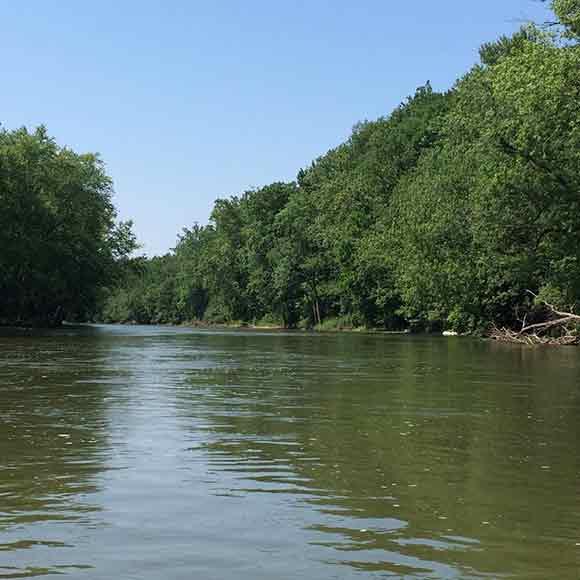The ripple effect
June 29, 2019 at 8:00 PM | News
Riverfront improvement and development ideas for communities of all sizes
From the White River Vision Plan for Indianapolis and Hamilton County to the riverfront developments happening in Fort Wayne, communities in Indiana are re-establishing connections with the rivers that flow through their cities and towns.
While many of these plans and projects are long-term and large-scale, many options exist for communities of all sizes to improve the health of their waterways and enhance how their residents engage with them. Jon Stolz, PE, Christopher B. Burke Engineering, LLC Managing Vice President, offers some ideas to consider as well as suggestions for implementation.

Ideas to consider
- Let the river be a river. Natural rivers are best.In all things with a river, we will find ourselves best served if the river exists as closely to its natural state as possible. In short, let the river be a river and then look at the best way to experience what it has to offer us.
- Connect and unify infrastructure. Some of the best solutions are working with what you already have. Are there existing trails you could connect to a spur trail leading to the riverfront? Could you create a pedestrian bridge over a waterway to create connections? Could existing signage be altered to point out the location or features of the river? Are there public spaces that would benefit with a connection to the river?
- Introduce new community spaces. Trails are relatively simple way to help people access the riverfront. In addition, simple elements like benches, picnic tables, and open community spaces for theater, movie nights or educational events can create waterfront destinations for all residents of the community to take advantage of.
- View the river as an amenity. Views of waterways can be attractions for commercial businesses like restaurants. For new or renovated facilities, encourage designers and developers to create structures that face the river. In the past, our buildings often turned their backs to the river; it’s time to flip that around.
- Integrate public art and educational exhibits. Rivers have history, having influenced the development of many towns and cities. I lived in Indianapolis for 30 years and was amazed at how little I knew about certain aspects of the White River. Educational markers and public art both provide opportunities for people to learn from and be inspired by the river.
- Foster activity with your river. It is amazing that so many communities have beautiful rivers, but so few have been on it with a canoe, kayak, inner-tube or boat. To experience the view, nature, quiet, and opportunities along a river, one should find a way to be on the water. The connection can often provide a unifying location and experience for the community.
Implementation tips
- Safely experience the river. Taking a canoe, kayak, or boat trip down the river provides a totally different perspective. If you haven’t been on your own river, that’s a great way to better understand what it can mean for your community.
- Leverage existing community assets. With any new development, it’s important for the community to take advantage of what they already have. What are the other aspects of the community, and how could the waterway relate to or enhance them?
- Seek out partnerships with organizations and adjacent communities. Consider developing a land trust, a partnership with a nonprofit that can be an effective steward of the area. Often existing river-based not-for-profits have the expertise and passion to do great things for their rivers. Explore partnerships with adjacent communities and local governments while looking to the other river plans going on around the state for inspiration and insight.
- Consider all the plans. Some communities have multiple plans and studies, from overall master plans to plans specific to their downtowns, parks, trails, and historic structures. Take a comprehensive look at these items—often the river is a common thread connecting all of them.
- Engage an experienced planning team. Work with a planning firm that can team with other consultants to assess the river’s resources and effectively facilitate the public engagement process to understand what the river means to its stakeholders.
We’re seeing a shift in how people value their rivers and what they mean to them. Cities and towns may want to do something with their river but feel improvement projects are beyond what they could achieve. While solutions will be different for each community, even incremental changes can result in positive impacts to the environment, economic development and quality of life.

